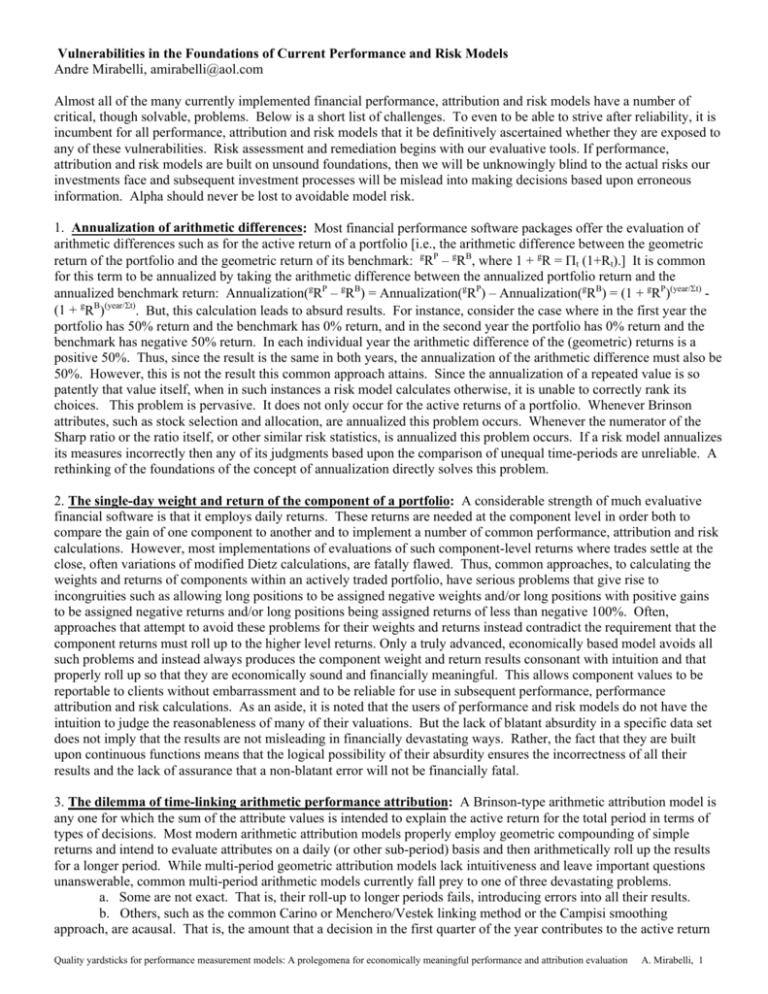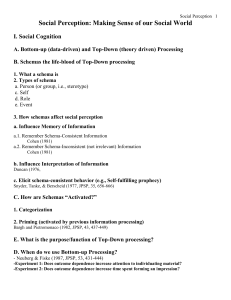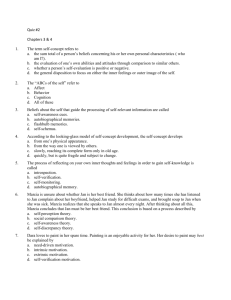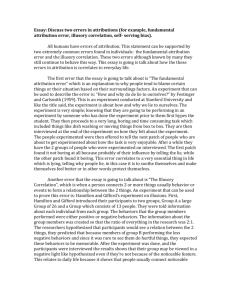Vulnerabilities in the Foundations of Current Performance and Risk
advertisement

Vulnerabilities in the Foundations of Current Performance and Risk Models Andre Mirabelli, amirabelli@aol.com Almost all of the many currently implemented financial performance, attribution and risk models have a number of critical, though solvable, problems. Below is a short list of challenges. To even to be able to strive after reliability, it is incumbent for all performance, attribution and risk models that it be definitively ascertained whether they are exposed to any of these vulnerabilities. Risk assessment and remediation begins with our evaluative tools. If performance, attribution and risk models are built on unsound foundations, then we will be unknowingly blind to the actual risks our investments face and subsequent investment processes will be mislead into making decisions based upon erroneous information. Alpha should never be lost to avoidable model risk. 1. Annualization of arithmetic differences: Most financial performance software packages offer the evaluation of arithmetic differences such as for the active return of a portfolio [i.e., the arithmetic difference between the geometric return of the portfolio and the geometric return of its benchmark: gRP – gRB, where 1 + gR = t (1+Rt).] It is common for this term to be annualized by taking the arithmetic difference between the annualized portfolio return and the annualized benchmark return: Annualization(gRP – gRB) = Annualization(gRP) – Annualization(gRB) = (1 + gRP)(year/t) (1 + gRB)(year/t). But, this calculation leads to absurd results. For instance, consider the case where in the first year the portfolio has 50% return and the benchmark has 0% return, and in the second year the portfolio has 0% return and the benchmark has negative 50% return. In each individual year the arithmetic difference of the (geometric) returns is a positive 50%. Thus, since the result is the same in both years, the annualization of the arithmetic difference must also be 50%. However, this is not the result this common approach attains. Since the annualization of a repeated value is so patently that value itself, when in such instances a risk model calculates otherwise, it is unable to correctly rank its choices. This problem is pervasive. It does not only occur for the active returns of a portfolio. Whenever Brinson attributes, such as stock selection and allocation, are annualized this problem occurs. Whenever the numerator of the Sharp ratio or the ratio itself, or other similar risk statistics, is annualized this problem occurs. If a risk model annualizes its measures incorrectly then any of its judgments based upon the comparison of unequal time-periods are unreliable. A rethinking of the foundations of the concept of annualization directly solves this problem. 2. The single-day weight and return of the component of a portfolio: A considerable strength of much evaluative financial software is that it employs daily returns. These returns are needed at the component level in order both to compare the gain of one component to another and to implement a number of common performance, attribution and risk calculations. However, most implementations of evaluations of such component-level returns where trades settle at the close, often variations of modified Dietz calculations, are fatally flawed. Thus, common approaches, to calculating the weights and returns of components within an actively traded portfolio, have serious problems that give rise to incongruities such as allowing long positions to be assigned negative weights and/or long positions with positive gains to be assigned negative returns and/or long positions being assigned returns of less than negative 100%. Often, approaches that attempt to avoid these problems for their weights and returns instead contradict the requirement that the component returns must roll up to the higher level returns. Only a truly advanced, economically based model avoids all such problems and instead always produces the component weight and return results consonant with intuition and that properly roll up so that they are economically sound and financially meaningful. This allows component values to be reportable to clients without embarrassment and to be reliable for use in subsequent performance, performance attribution and risk calculations. As an aside, it is noted that the users of performance and risk models do not have the intuition to judge the reasonableness of many of their valuations. But the lack of blatant absurdity in a specific data set does not imply that the results are not misleading in financially devastating ways. Rather, the fact that they are built upon continuous functions means that the logical possibility of their absurdity ensures the incorrectness of all their results and the lack of assurance that a non-blatant error will not be financially fatal. 3. The dilemma of time-linking arithmetic performance attribution: A Brinson-type arithmetic attribution model is any one for which the sum of the attribute values is intended to explain the active return for the total period in terms of types of decisions. Most modern arithmetic attribution models properly employ geometric compounding of simple returns and intend to evaluate attributes on a daily (or other sub-period) basis and then arithmetically roll up the results for a longer period. While multi-period geometric attribution models lack intuitiveness and leave important questions unanswerable, common multi-period arithmetic models currently fall prey to one of three devastating problems. a. Some are not exact. That is, their roll-up to longer periods fails, introducing errors into all their results. b. Others, such as the common Carino or Menchero/Vestek linking method or the Campisi smoothing approach, are acausal. That is, the amount that a decision in the first quarter of the year contributes to the active return Quality yardsticks for performance measurement models: A prolegomena for economically meaningful performance and attribution evaluation A. Mirabelli, 1 of the year when calculated immediately after the end of the first quarter is different than the amount that that very same decision in the first quarter of the year contributes to the active return of the year when calculated after the end of the second quarter. Thus, future results warp all specific past results. This means that, if all be known by the clients, they will see that the results for specific unchanged past periods provided on past reports must be continually revised with the passing of time as shown on newer reports, i.e. with the addition of any subsequent period, in order to keep the roll up of those past results for sub-periods consistent with the assessment of the total period. c. The remaining widely known models for time linking of arithmetic attributes all exhibit sign-flipping. The Frongello/Mellon model and the early Mirabelli model on which it was modeled have this problem. Here, for instance, the stock selection decision, made in and confined to the first quarter, contributes to the active return of the first quarter an amount that can be of different sign than the contribution of that very same stock selection decision, made in and confined to the first quarter, contributes to the active return of the year. Thus, the same decision, totally confined to the first quarter, is said to be good for the first quarter but bad for the year. But this is absurd. A specific investment decision either is good for the portfolio’s intended goal of creating positive active return or it is not. These problems undermine the financial coherence of the economic properties that attribution intends to measure, destroying its ability to provide viable financial insight. A reanalysis of the basic intent of multi-period performance attribution enables advanced models to avoid all of these problems and implement an economically appropriate approach to all multi-period arithmetic attribution. 4. Long/short Performance measurement: The returns of the components of portfolios must always roll up to give the return of the portfolio. For long/short portfolios, it is necessary to distinguish between two cases: (I) The case where this requirement is satisfied by treating shorts formally by assigning them negative weights and the returns of their underlier, and (II) The economically appropriate case for attribution and the linking of component-level returns, where each short has a return with the same sign as its gain and a weight that indicates the positive portion it requires of the portfolio. This is best understood by noting that shorts are just special cases of derivatives, and that the return of any derivative instrument must have the same sign as the gain of that instrument and not be restricted to being equal to the return of its underlier, whose gain can have a different sign then the gain of the instrument itself. The appropriate approach can be accomplished within a model that employs a calculation applied consistently to all instruments in order to obtain the economically meaningful basis, weight and return of each instrument, including all derivatives in general. 5. Long/short performance attribution: In the common implementation of benchmark-relative long/short performance attribution an unacceptable effect occurs: A continuous variation of a position from long, to zero weight, to short causes a discontinuous change in the allocation values separately assigned to the long and short portfolios. An economically meaningful long/short attribution should not display such mathematical quirks. Rather, all useful financial evaluations must fulfill the following necessary requirement: An infinitesimal (negligible) change in the input values must never cause a significant change in the analysis’ output. The proper structuring of attribution resolves this issue. 6. Decision Risk can expand risk analysis beyond market prices and opening daily weights to analyze the effects of intra-day portfolio rebalancing and the general trading that implements particular investment decisions. It allows for the clear separation of decision risk from market risk and a subsequent increase in the dimensionality of the risk/reward space so that it does not only include standard market risk analysis but also explicitly and separately includes decision risk as well. This enhancement can significantly improve the portfolio construction process by directly allowing for the increase in the subsequent optimized expected portfolio return. Because current risk analysis does not clearly distinguish decision risk from market risk, common models either ignore decisions or confuse decision and market risks. 7. Fixed Income Attribution often allows the boundaries of duration buckets and other such bucketed continuous properties to warp the analysis. A non-boundary approach to bucketing for all continuous properties avoids the problems of drift across ad-hoc boundaries. On a more basic level, fixed income and equity attribution must and can be integrally meshed to properly address the attribution of balanced funds and this can and should be accomplished in a manner fully comparable to the analysis applied to pure equity portfolios and to pure fixed income funds. Separate models for fixed and equity investments belies the truth that the option to invest in either of these assets always comes together in the choices open to all investors. Vulnerabilities such as these can mislead and destroy confidence or, when unrecognized, destroy the power of the information investment managers rely upon. All these ills can be alleviated but, first, must be clearly recognized. There can be no confidence in an investment process if the tools by which it is evaluated are flawed. No long-term good can come out of portfolio construction that relies on a faulty understanding of the past results of its decision process. Quality yardsticks for performance measurement models: A prolegomena for economically meaningful performance and attribution evaluation A. Mirabelli, 2







